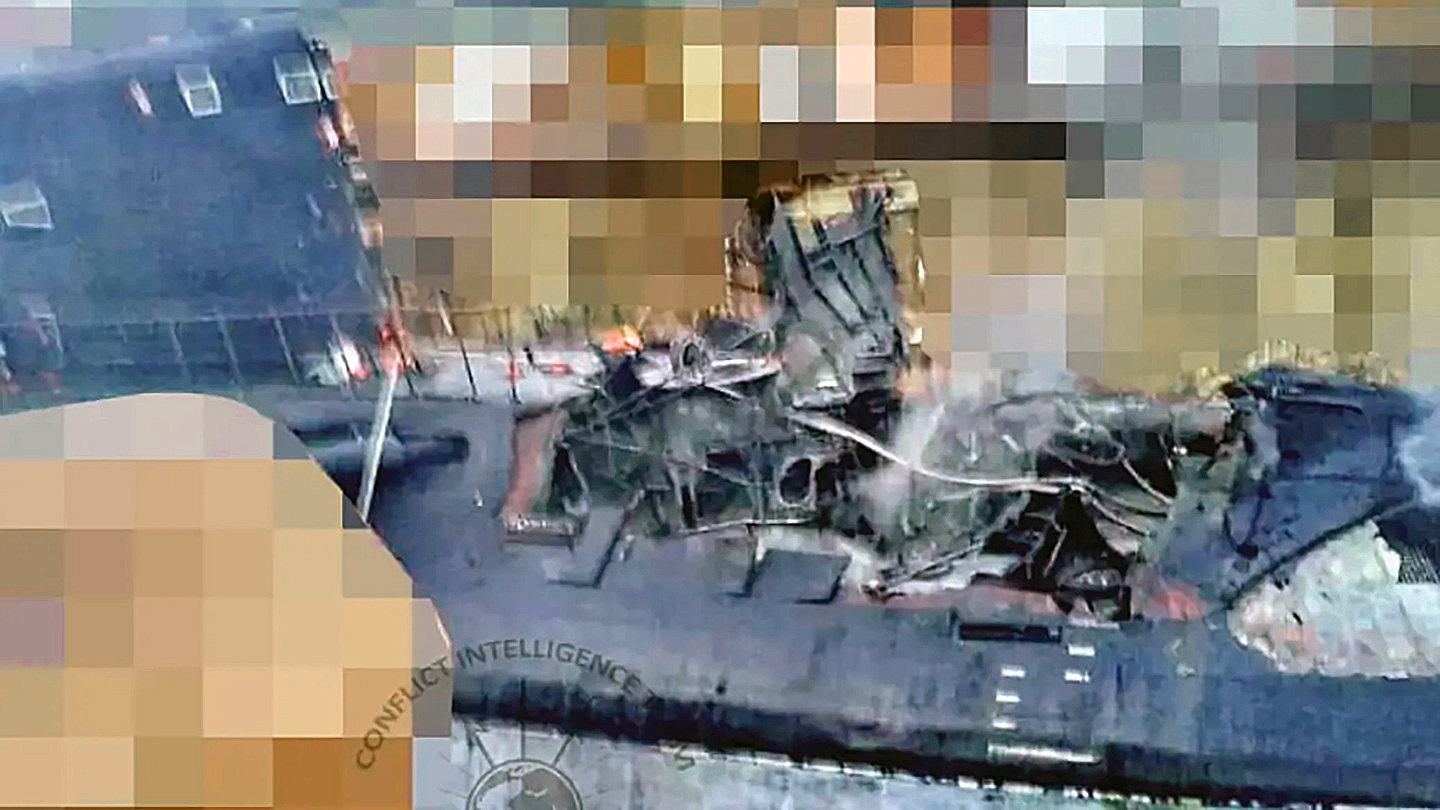Photos that began to circulate on social media today purportedly show the significant damage sustained by a Russian Navy Kilo class diesel-electric attack submarine after a reported Ukrainian cruise missile strike last week. The Kilo class boat, together with a Ropucha class landing ship, had been in dry dock in the Black Sea port of Sevastopol, in Russian-occupied Crimea, when it came under attack in the early hour of September 13, as you can read about in The War Zone’s previous reporting on this incident.
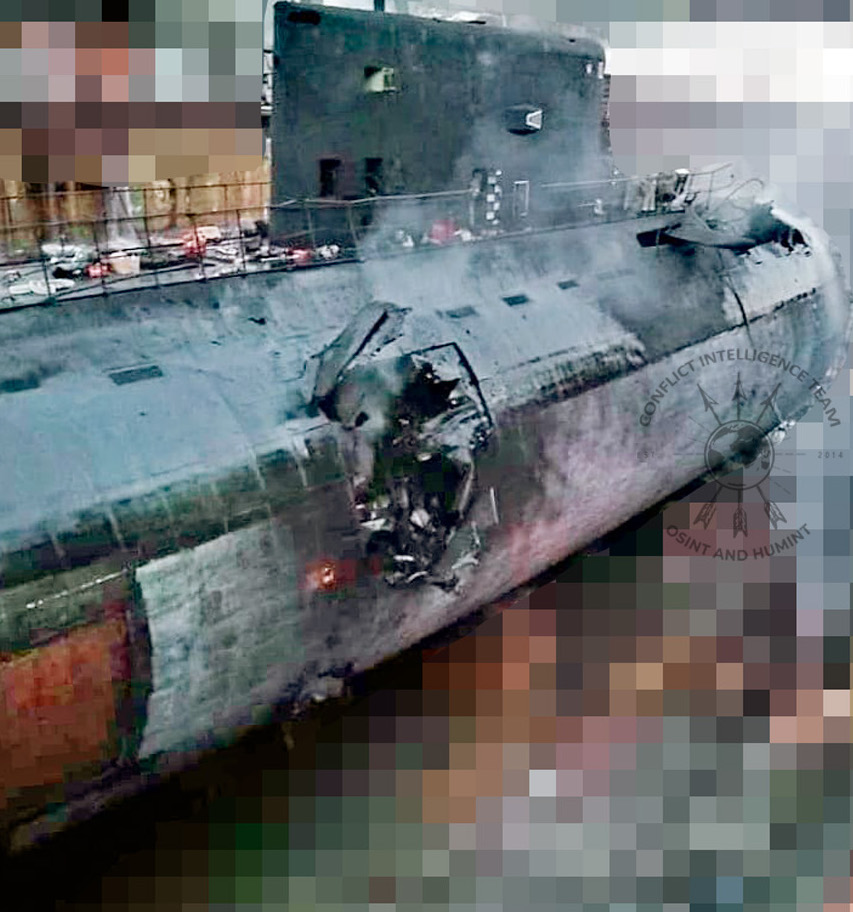
The photos, which apparently were first published by the Conflict Intelligence Team (CIT), an independent investigative organization, show what appears to be a direct hit to the bow, leaving a gaping hole. Aft of the sail, on the starboard side, is another major impact, which appears to have blown part of the hull out, perhaps as the result of a secondary explosion. Another possible explanation could be the detonation of a dual ‘BROACH’ warhead, like that carried by the Storm Shadow and/or SCALP-EG cruise missiles that are widely reported to have been used in the attack.
Multiple accounts — including from the U.K. Ministry of Defense — indicate that the submarine in question is the Rostov-on-Don (B-237), an Improved Kilo boat, from the Project 636.3 class, which is capable of launching Kalibr land attack cruise missiles, of the type widely used against targets in Ukraine. This submarine entered service in 2014 and is one of four of its type with the Black Sea Fleet.
Regardless, the degree of damage sustained by the submarine suggests that it will have to be written off altogether. In the very best-case scenario, it will require a rebuild, salvaging whatever components they can, which will put it out of action for years. Furthermore, any such repairs would almost certainly have to be undertaken outside of the Black Sea, which would be a serious logistic endeavor in itself.
Two different authorities on submarine warfare, undersea warfare analyst H. I. Sutton and former U.S. Navy submariner Aaron Amick, both tweeted today that they consider the Improved Kilo class boat damaged beyond repair.
Certainly, the photos bring into serious question official Russian accounts that the submarine (together with the landing ship) will be repaired and returned to action. Ukrainian officials, for their part, had already claimed that there was a “high probability they are not subject to restoration.”
Soon after the attack, satellite imagery from Sevastopol had also begun to reveal the very severe damage meted out to the submarine and the landing ship. Not only did the vessels themselves appear to be partly burned out, but the viability of the entire dry dock complex in which they were located looked questionable.
The Russian Ministry of Defense had claimed that the attack involved 10 missiles and three unmanned surface vessels (USVs), or drone boats, with seven of those missiles being claimed as shot down. There have been claims that the missiles used were air-launched Storm Shadow and/or SCALP-EG standoff missiles that can be launched by Ukrainian Air Force Su-24 Fencer strike/reconnaissance aircraft.
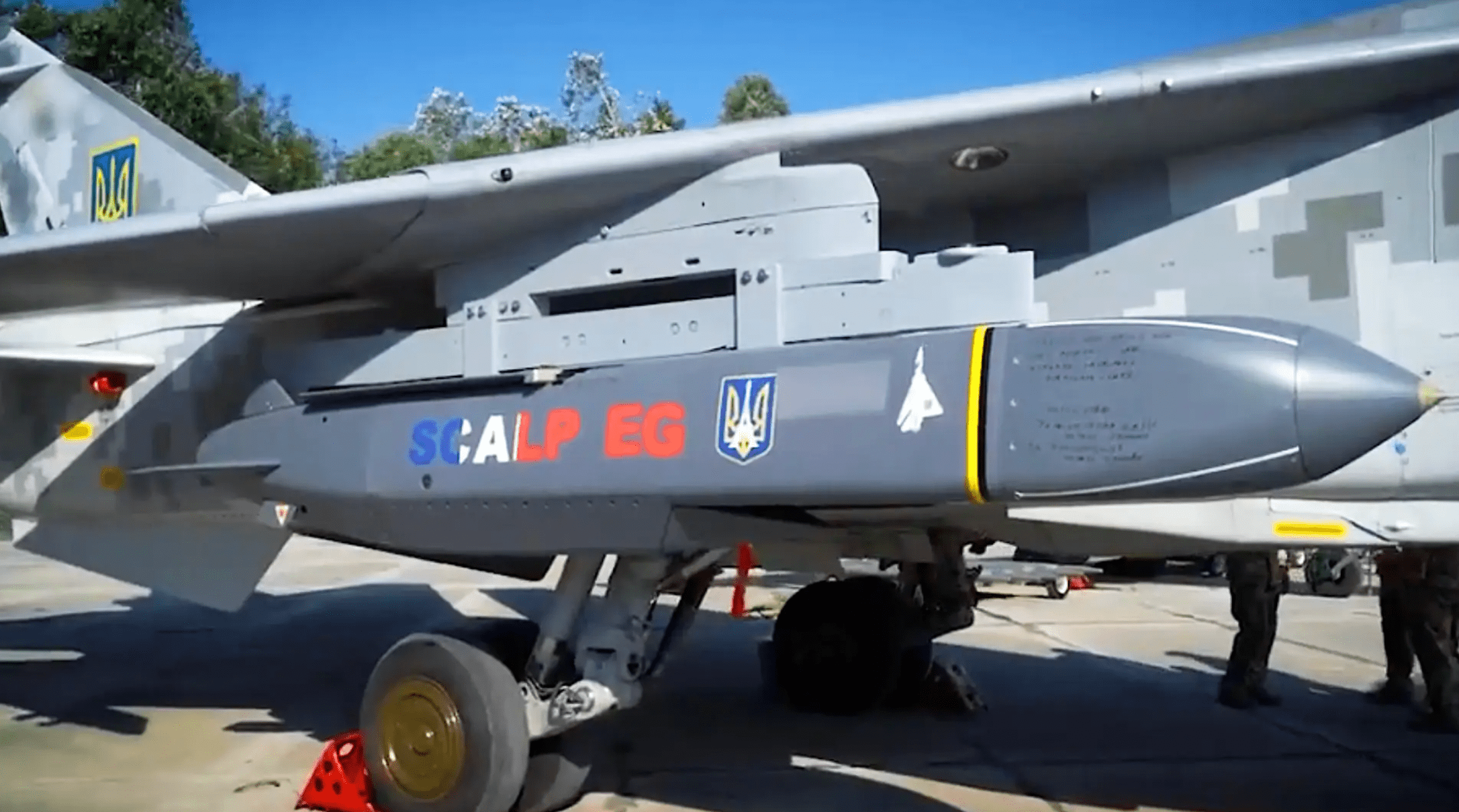
In a tweet soon after the attack, the chief of the Ukrainian Air Force, Mykola Oleshchuk singled out his pilots for “excellent combat work,” pointing again to the likelihood of their involvement.
As we pointed out before, the extent of this attack on the port of Sevastopol — which has repeatedly been targeted by Ukraine since the Kremlin launched its full-scale invasion of Ukraine — could have serious ramifications, perhaps even prompting a portion of the Black Sea Fleet to be relocated or to make reduced use of the facilities there.
Then there is the question of Sevastopol’s ability to undertake maintenance and repairs of Black Sea Fleet vessels, at least until the dry docks at the Sevmorzavod facility that contains the submarine and landing ship can be returned to regular use.
According to a report from Radio Free Europe/Radio Liberty, “Black Sea naval capabilities are likely seriously curtailed for the foreseeable future,“ as a result of infrastructure damage, with the problem exacerbated by there being no similar facilities for major repair works on naval ships elsewhere in the Black Sea.
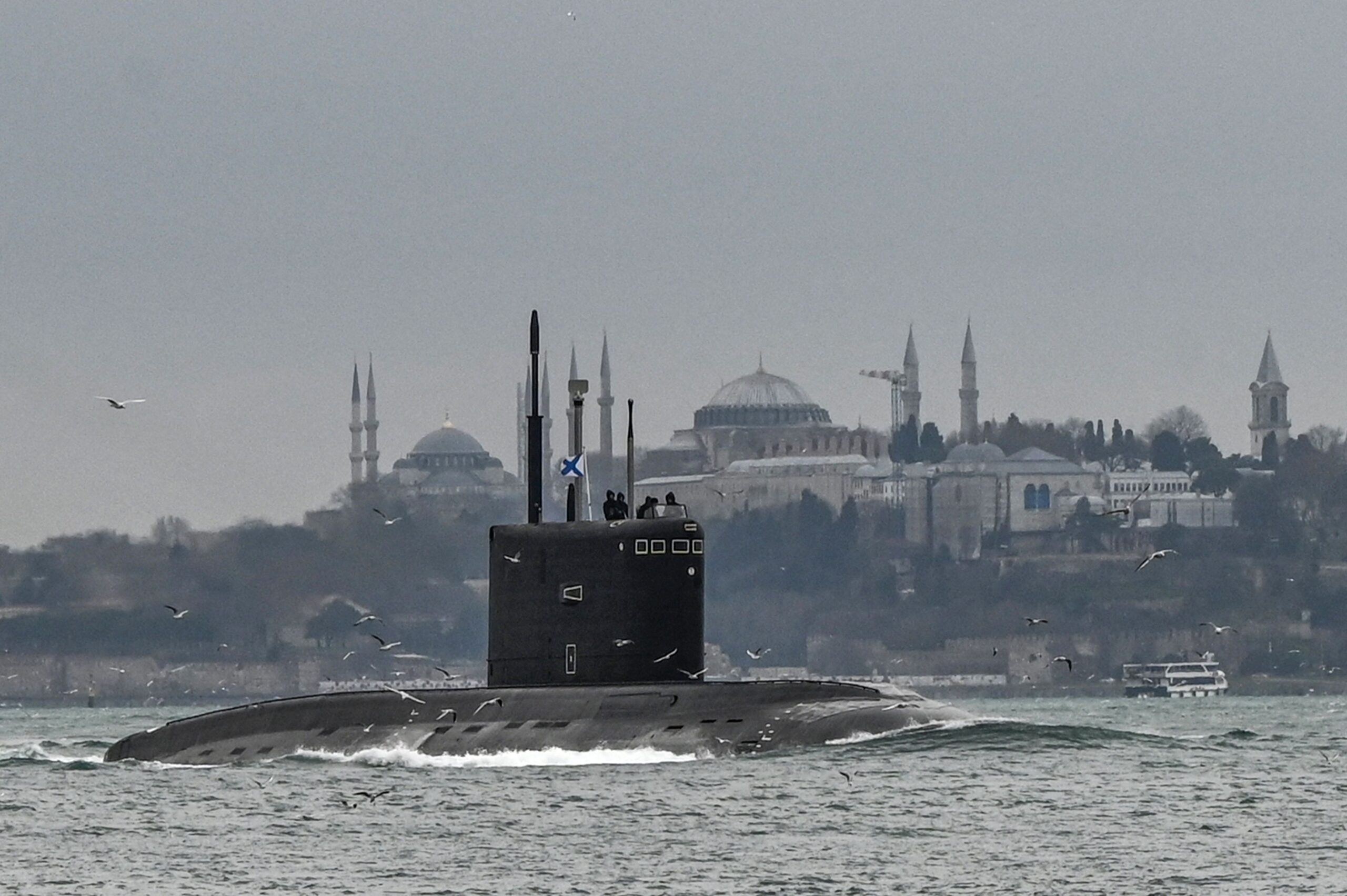
Even the port of Novorossiysk, further to the east, on the coast of mainland Russia, lacks facilities for in-depth maintenance of submarines, for example. Floating docks are available elsewhere in Crimea, but they are also unable to support more extensive repair work.
“While the specific strike will have an impact on [Black Sea Fleet] operations, the larger impact is cumulative,” Dmitry Gorenburg, from the Washington-based Center for Naval Analyses think-tank told Radio Free Europe/Radio Liberty “Overall, I see Russia’s control over the Black Sea slipping gradually.”
On the other hand, it’s hard to gauge the actual extent of the damage to the dry docks themselves. It could be the case that the major work will involve removing the hulks of the submarine and landing ship, after which only minor repairs might be needed. Even this, however, could prove to be a protracted job and would, in turn, have an impact on the overall availability of the Black Sea Fleet’s larger vessels. This also assumes that the dry docks don’t just get struck again.
In the near term, one of the effects of the September 13 attack could well be the bolstering of ground-based air defenses around the port, as well as additional measures to deal with USVs, which have been repeatedly used against the facility as well as Black Sea Fleet warships more generally. This may become more challenging than it sounds though as Ukraine is degrading Russia’s high-end air defenses on the peninsula using similar long-range strikes. These appear targeted at blinding early warning and engagement opportunities for the cruise missiles and drones as they approach, enhancing their overall survivability. They could also allow for Ukrainian Su-24s to get closer to the peninsula for launches of SCALP-EG and Storm Shadows over the northwestern Black Sea.
Clearly, Ukraine expects to launch further attacks on Sevastopol, which may very well now also include strikes by the land attack version of the domestically produced Neptune anti-ship missile, a significant development that you can read more about here.
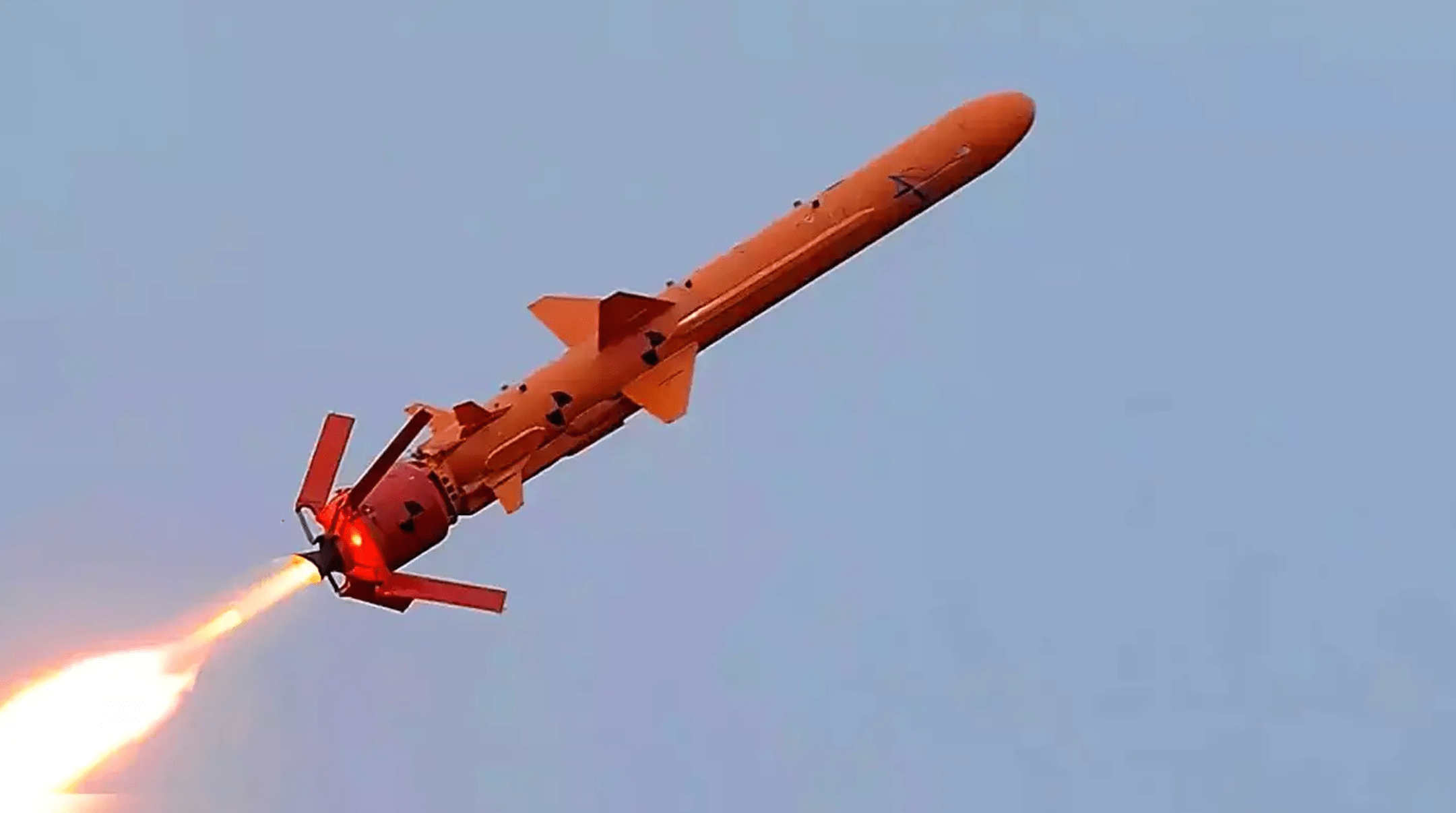
“There will be more drones, more attacks, and fewer Russian ships. That’s for sure,” Ukraine’s Digital Transformation Minister Mykhaylo Fedorov told Reuters last week.
Exactly what form those attacks will take remains unclear, but there is no doubt, by now, that Russian warships are vulnerable simply sitting in port in Sevastopol. And with the deep maintenance and repair facilities at that location out of action, for the time being, any further damage to vessels will only compound the Russian Navy’s problems.
Contact the author: thomas@thedrive.com
